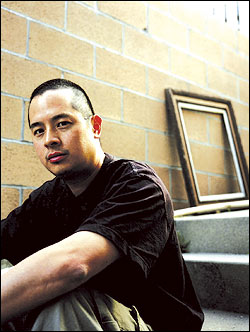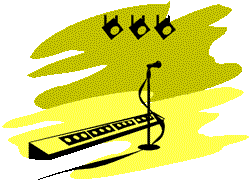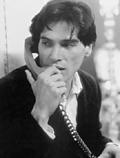To call Jeff Chang’s Can’t Stop Won’t Stop: A History of the Hip-Hop Generation (St. Martin’s Press, $27.95) the best book about hip-hop ever written is to risk mischaracterizing it. Pick it up expecting a treatise on the stuff you hear at parties or on MTV2, and you’ll wonder whether you picked up the wrong book. But pay attention to that subtitle. Chang is out to define a body of humanity, or at least find its outline. Can’t Stop is without question a music book, but it touches on music fitfully, though the portions where Chang describes individual works (Grandmaster Flash and the Furious 5’s “The Message,” Afrika Bambaataa and Soul Sonic Force’s “Planet Rock,” Ice Cube’s Death Certificate) are astute enough to make you wish for more of the same.
Instead, what Chang accomplishes here is to situate hip-hop as the center of a series of evolving sociopolitical landscapes—and what he proves, again and again, is how aggressively similar the ones he focuses on look. He begins with Robert Moses, the father of the Cross-Bronx Expressway and the man who gutted the South Bronx, which in turn helped pave the way for hip-hop—but not until it incited a rise in gang activity. The second chapter focuses on Jamaica, particularly during the 1970s, when street-level feuds erupted under (and around) rival politicians Michael Manley and Edward Seaga. Both chapters are gripping on their own, but Chang highlights their similarities by structuring several parts of each nearly identically.
Can’t Stop would be a masterpiece of reporting even if it didn’t include the best prose of Chang’s I’ve encountered. The usual stories of hip-hop’s nascent years— of DJ Kool Herc’s apprenticeship at house parties and of the rise of turntable rivals like Grand Wizard Theodore, Afrika Bambaataa, and Grandmaster Flash—are broadened and deepened here, and they’re also to some degree upended. Chang paints a full portrait of Kool Herc (aka Clive Campbell, the son of Jamaican immigrants, who also wrote the book’s introduction), detailing his childhood and home life and bringing us into the early block parties he played without overly romanticizing everything. Chang’s delicate sense of scale is especially crucial here; he’s constantly going after a fuller angle, whether it’s the Bronx gang truce of the early 1970s (which definitively swung the area’s youth axis toward hip-hop’s formation) or attempting to locate the mysterious Bambaataa’s background. Factually speaking, Chang comes up short, but he turns this to his advantage, explicating Bam’s legend and character in a way that goes far past the usual thicket of clichés about the DJ’s role in uniting the early rappers with the wider world in the early to mid-’80s.
Surprisingly, Chang goes light on the formation of Def Jam Records—hip-hop’s single most important label, and at least as potentially interesting a site of study of the form’s political aspects (in both the elected-official and everyday-life-including-race senses) as the rise and fall of the first rap magazine, The Source, which gets its own chapter. This isn’t surprising; Chang is a journalist, and journalists gravitate toward stories about journalism. Then again, Def Jam figures into one of Can’t Stop‘s most gripping chapters, an exhaustive chronicle of the early years of Public Enemy, still hip-hop’s greatest group (sorry, Wu-Tang) and in Chang’s telling a stand-in for the music’s late-’80s growing pains, which PE underwent with far more scrutiny than most musicians, thanks to lead rapper Chuck D.’s sometimes confused political agenda and the risibly anti-Semitic statements the group’s “minister of information,” Professor Griff, made to The Washington Post in 1989.
Chang’s hour-by-hour play-by-play of PE in peril not only puts you inside the action, it demonstrates how much was at stake at the time with the group—and by extension, with hip-hop. This is underlined with the chapter on Ice Cube, the L.A. riots of 1992 (Chang’s blow-by-blow narrative may be the book’s best sustained sequence), and the subsequent gang treaty, which brought forth a new wave of West Coast rap, in particular Dr. Dre’s endlessly influential The Chronic, which Chang situates as the definitive post-riots album.
If Chang’s emphasis on hip-hop’s non- musical aspects makes you hungry for engaged record geekdom, Peter Shapiro’s The Rough Guide to Hip-Hop (Rough Guides, $24.95), updated from the first, 2001 edition, ought to do the trick. Like the earlier book, a pocket-sized “mini,” the updated Rough Guide is divided by artist, with a fistful of sidebars (on topics like white rappers, breakbeats, turntablism) to flesh it out.
If Chang is cool and considered, whatever his underlying passion, Shapiro is a slangy hipster with a drive-by writing style, and while plenty of the book was obviously written in haste, the points where the author takes aim and fires are as entertaining as any music writing around. From the Bad Boy Records entry: “After being responsible, in one way or another, for a staggering 40% of Billboard number ones in 1997, Puff relocated Daddy’s House to the exclusive beach community of the Hamptons so he could live by the sea, like his magic dragon namesake.” Or try the Kid Rock entry: “Kid Rock then accomplished the ultimate feat for him and his audience—he bedded Pamela Anderson.”
Shapiro is a world-class crank, and serious rap fiends will likely find his tastes unreliable—he gives serious dap to the ultranerdy (and, at times, borderline unlistenable) Anticon Records stable, for example. But if pop music discourse often takes the form of an argument, Shapiro is a world-class brawler.








